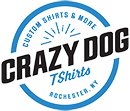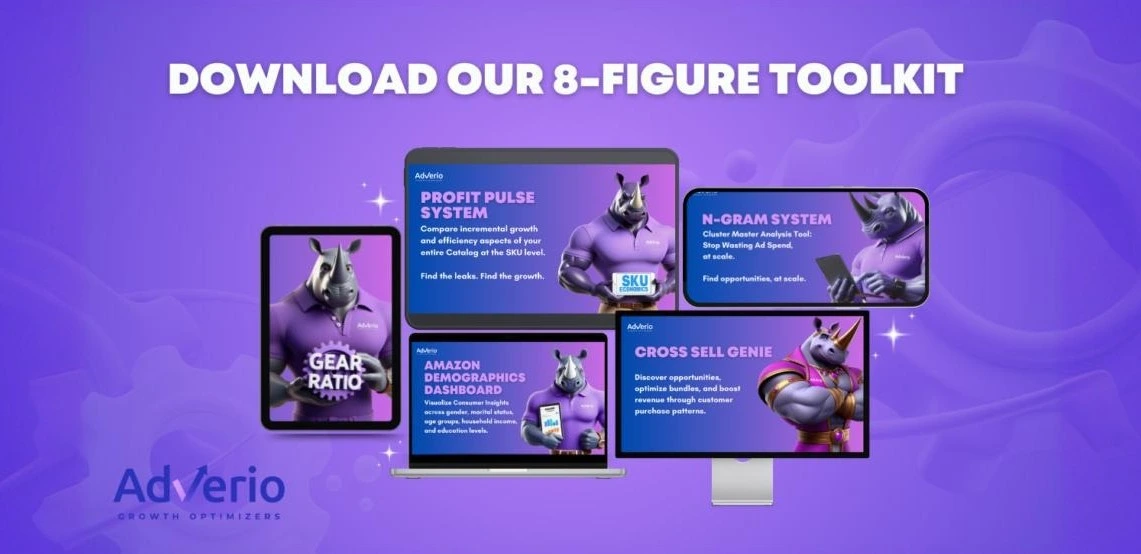Table of Contents
Launching a new product is an exhilarating yet challenging venture. Your go-to-market pricing strategy greatly influences the product’s initial traction and overall success. Setting appropriate prices is a delicate balance; too high and you hinder adoption, too low, and profitability is compromised.
So let’s make sure you get onto a great launch day for your product. One that sells more even with the added competition.
Regardless and depending on your budget, competitiveness, and eagerness, you must be prepared to launch with a lower penetration price and gradually raise prices over the next 3-12 months toward the full target price point as market acceptance and social proof grows.
This comprehensive guide not only dives into the essential strategies for successfully pricing a new product but also uncovers additional tactics that can elevate your product launch to new heights.
Oh, before I forget, just like most sellers out there, the most successful launches start before they even begin selling… Sure, you can still have a successful launch even without a pre-launch strategy, however, the unassisted launch has proven to be more expensive and takes longer to achieve optimal results.
Before I dig into the meat and potatoes of mastering product launch pricing, take note of:
Our Favorite Launch Hack That Can Add Boatloads of Profit to Your Launch
For Amazon sellers, timing a product launch is not just about setting a date and pushing your product live; it’s a strategic maneuver that, if executed correctly, can significantly impact sales, reviews, and long-term success.
Example Strategy:
Timing your product launch on Amazon can significantly augment the traction and profitability of your new product by leveraging high-demand periods to align with consumer buying patterns, optimizing visibility, and driving sales during critical shopper events.
Riding the biggest consumer waves with special considerations for high-demand periods alone can trim your launch curve in half or more.
For instance, launching 4-6 weeks prior to a peak shopping event such as Prime Day and Big Spring Sale, Back-to-School, or a longer tentpole event such as Black Friday, especially for highly sought-after and seasonally giftable products, can allow you to successfully leverage the highest shopper intent.
Additional Tip:
Add fuel to the fire by targeting competitors’ products that have historically gone out of stock or show low inventory counts.
Pre-Launch Offers for Amazon Sellers
Pre-launch offers are the most strategic way to generate excitement and anticipation for a new product before it officially hits the market. As an Amazon seller, utilizing pre-launch offers can be a key differentiator, providing the momentum needed for a successful product launch.
Here’s an expanded look at pre-launch offers and how to leverage them for maximum effectiveness on Amazon.
Build a Contact Base
Start the buzz early by gathering a list of potential customers interested in your product. Use your existing email lists, social media followings, and other marketing channels to tease the upcoming launch and invite sign-ups for exclusive pre-launch offers.
Create Exclusive Deals
Arrange exclusive deals for those who have expressed interest pre-launch. This can include:
- Discounts: Provide a special discount code for the first purchase.
- Bundled Offers: Offer a package deal, including a new product with complementary items.
- Early Access: Give early sign-ups the ability to buy the product before the general public.
Leverage Amazon’s Programs
Amazon has specific programs that can support pre-launch strategies:
- Amazon Vine: Enroll your new product in Amazon Vine, where trusted reviewers receive your product for free and leave honest reviews, building customer trust around your new product from day one.
- Amazon Launchpad: If applicable, participate in Amazon Launchpad, a program designed to help launch and grow startups and new brands, offering enhanced product discoverability.
Drive External Traffic
Use external traffic sources to drive potential customers to your Amazon listing:
- Social Media Campaigns: Run targeted ads and post content related to the upcoming launch on platforms like Instagram, Facebook, and Pinterest.
- Content Marketing: Write blog posts or articles on your website or third-party sites to develop interest in the features and benefits of your product.
- Partnerships and Influencers: Partner with influencers or related brands to reach a wider audience and validate your product’s market fit.
Gather Reviews
Encourage early buyers to leave feedback on your Amazon product page as soon as possible. Positive reviews and ratings at the onset of your launch can be pivotal in convincing other customers to make a purchase.
Monitor and Adjust
Keep a close eye on your pre-launch metrics to adapt and fine-tune your approach as needed. Analyze traffic, click-through rates, and conversion rates from different sources to identify what’s working best and what needs tweaking.
Utilize Countdowns
Create a sense of urgency and excitement with a countdown toward the launch day. While this isn’t feasible on Amazon, this can be done via a custom landing page, emails, and social media channels.
Keep Communicating
Effective communication is a cornerstone of maintaining and enhancing customer relationships, especially those who have shown interest during the pre-launch phase. It is essential to keep these potential buyers engaged and informed throughout the product lifecycle, from anticipation to purchase and beyond.
Here’s a detailed strategy to ensure ongoing communication that keeps your audience captivated and responsive:
Highlight Post-Launch Deals and Offers
– Exclusive Discounts: Offer special discounts or bundle deals that apply to future purchases, especially tailored for those who showed interest pre-launch or made a purchase.
– Limited-Time Offers: Create urgency with time-sensitive deals that encourage quicker buying decisions.
– Loyalty Perks: Leverage Brand Tailored Promotions (click to see our strategies here) cohorts such as those who have purchased the most from your brand, enhancing customer retention and encouraging continuous engagement.
Engagement Through Educational Content
– Product Guides: Include detailed guides or FAQs that help users get the most out of their purchase.
– How-to Videos: Share videos demonstrating how to set up, use, or maintain the product effectively.
– Webinars or Live Q&A: Host sessions where customers can learn more about the product, your brand, and ask questions directly, providing a personal interaction with your brand.
Feedback Collection and Response
– Surveys and Feedback Requests: Regularly invite feedback on their experience through automated surveys via Amazon’s communication system while always maintaining Terms of Service. This not only shows that you value their opinion but also helps you improve future products and services.
– Respond to Feedback: Actively respond to both positive and negative feedback via product reviews and seller feedback portals. Thank customers for their praise, and address complaints or suggestions with genuine concern and a clear plan for resolution. Here’s our article on How to Banish Negative Reviews
Utilize Various Communication Channels
– Amazon Buyer Messaging: For official and detailed communications.
– Social Media: Here’s our full write up: Amazon Posts: How to Master the Art & Science of Amazon’s Social Media Customer Engagement Tool
By employing these strategies, you keep the communication lines open and active, fostering a strong relationship with your customers. This improves customer satisfaction and loyalty and enhances the overall customer lifetime value to your business.
After the Launch
Continue to engage with customers who took part in the pre-launch. Solicit feedback, offer personalized customer service, and potentially cross-sell or upsell as appropriate. These early adopters can become your product advocates and help drive organic word-of-mouth.
By incorporating these pre-launch strategies, Amazon sellers can effectively prime the market for their new products, build an engaged customer base, and accelerate the trajectory toward success once the product officially goes live on Amazon.
Now, let’s dig into the launch pricing tactics…
Strategic Pricing for Launch Success
Starting with a price around 50-60% off the intended target price can be a strategic move to build early adoption and create buzz, aligning with the concept of penetration pricing.
For products that tap into cultural trends or have inherent demand, launching closer to the full target price can be a viable strategy, but it still does not guarantee success in a saturated market.
Incremental price increases post-launch are also vital. A gradual increase, starting with 10% in the second week and followed by smaller increments, can effectively balance consumer perception and value, similar to the principles of strikethrough pricing.
Flexibility in pricing based on product category and market demand is another key consideration. Adapting strategies to suit different market conditions and competitive landscapes is crucial for maintaining a competitive edge.
Sustainable Cost-Plus Pricing
If you can’t support 50-60% discount pricing, then determine your sustainable Cost-Plus Pricing. This can ensure a sustainable launch by calculating all costs associated with your product and adding a standard markup. While not the most customer-centric approach, it guarantees your prices cover costs and generate a pre-defined profit.
Competitive Pricing Analysis
You have to have a strategy to succeed, everything that is calculated is sustained.
Instead of guessing at pricing or blindly copying competitors, conduct an in-depth competitive pricing analysis on rival products to determine an optimal market-aligned price range. Tools can help automate this competitor intelligence gathering process, providing continual price monitoring and alerts when rivals change their pricing. You can stay one step ahead of the competitor with proper pricing strategy.
[Bonus] How We Run Segmented BTP (Brand Tailored Promotions) on Amazon.
Here’s our more in-depth guide: Craft Customer-Centric Promotions Like a Pro Without Deep Marketing Budgets
Don’t Forget The Standbys: 3 Reliable Classics.
There are always a few classic pricing strategies that stand the test of time:
- Strikethrough Pricing: Emphasize the discount by showing the “old” price struck through next to your now lower, discounted price.
- Coupons: Coupons can drive sales while leaving the product’s list price intact.
- Promotional rates: Timely offers can help move products without permanently lowering the price.
It should go without saying, be sure to fully prepare stock levels.
Ensure you have adequate stock and reliable fulfillment in place to handle the influx of orders from your pre-launch efforts. Running out of inventory quickly can halt the momentum you’ve built and create costly hurdles for your product’s long-term success.
New product launches live or die based on getting pricing right from the start
Leverage data-driven pricing strategies to optimize adoption momentum and profit margins rather than taking a shot in the dark. Conduct competitor analysis, A/B test pricing tiers, factor in demand fluctuations, and tune pricing levers tied to real-world buyer response. Hone your pricing craft, and your next product introduction can more readily find its breakthrough.
Always be optimizing. The Amazon marketplace is dynamic, and what works for one product launch may not work for another. Continuously refine your strategies based on product performance data, market trends, and changes in the competitive landscape.
Master these go-to-market pricing tactics, and your product’s chances for success will improve exponentially





























